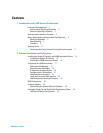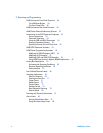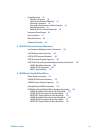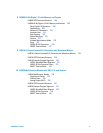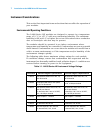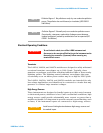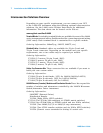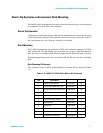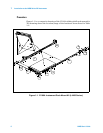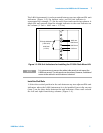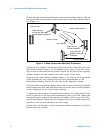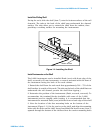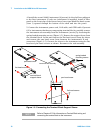
Introduction to the L4400 Series LXI Instruments 1
L4400 User’s Guide 3
Electrical Operating Conditions
Trans ients
The L4421A, L4433A, and L4437A modules are designed to safely withstand
occasional transient overvoltages up to 1000 Vpeak. Typically, these
transient overvoltages result from switching inductive loads or from nearby
lightning strikes. The lightning- caused transient overvoltages that may
occasionally occur on mains power outlets may be as high as 2500 Vpeak.
The L4445A, L4450A, L4451A, and L4452A modules are intended for only
low- voltage applications, and should not be connected to circuits that may
generate or conduct large transient voltages.
High Energy Sources
These instruments are designed to handle inputs up to their rated currents
or their rated powers, whichever is less. Under certain fault conditions, high
energy sources could provide substantially more current or power than a
module can handle. It is important to provide external current limiting, such
as fuses, if the instrument inputs are connected to high- energy sources.
NOTE
Pollution Degree 1: No pollution or only dry, non-conductive pollution
occurs. The pollution has no influence (on insulation) (IEC 61010-1
2nd Edition).
NOTE
Pollution Degree 2: Normally only non-conductive pollution occurs.
Occasionally, a temporary conductivity (leakage current between
isolated conductors) caused by condensation can be expected (IEC
61010-1 2nd Edition).
WARNING
To avoid electric shock, turn off the L4400 instrument and
disconnect or de-energize all field wiring to the instrument and to
the analog bus connector (if present) before removing any
terminal block covers.
CAUTION
Install current limiting devices between high energy sources and
the module inputs.



